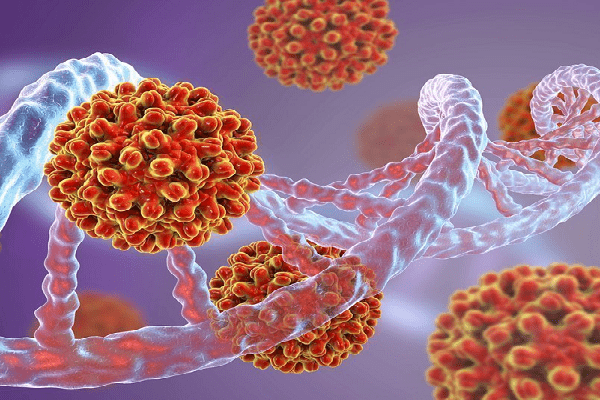Infectious diseases >>>> The most dangerous hepatitis is hepatitis D
The most dangerous hepatitis is hepatitis D.

Viruses, united by the common name "Hepatitis viruses", have many varieties, but endowed with one common property - their disease-causing activity is aimed at the liver (infecting liver cells).
Against the background of the development of medical and pharmaceutical technologies, there are quite a few methods of treatment and prevention of viral hepatitis, but the whole problem of curing viral liver diseases comes down to the issue of timely detection of a viral infection in the body and an early start of treatment.
Unfortunately, hepatitis viruses are quite insidious, and are in no hurry to manifest themselves with symptoms in the early stages of infection, which practically makes it impossible for a person to pay attention to poor health and take timely measures to neutralize a dangerous microorganism.
For this reason, within the framework of the prevention of viral hepatitis, there is a rule: an annual blood test to detect antibodies to viruses, so that treatment of the disease can be started at the stage of insufficiently serious (irreversible) liver damage. The key to recovery from hepatitis viruses is early treatment.
But there is a hepatitis virus (HDV virus), which by itself does not know how to integrate into the liver's DNA, but does so in conditions when the body is already weakened by another type of hepatitis (hepatitis B). The Hepatitis delta virus (HDV) uses the protein structures of the hepatitis B virus to insert its genome. This virus is called the satellite virus, and in the literature it is referred to as the Delta hepatitis virus (D - Deltavirus).
For a long time, the hepatitis D virus was not considered pathogenic for the human body, since it did not have a genetic structure that made it possible to capture the DNA of human liver cells, due to the fact that the Delta virus belongs to RNA-infectious viruses that integrate their genome into the DNA of the cell indirectly (with help of other protein structures).
Deltavirus of hepatitis turned out to be much more pathogenic than its "classmates", as it has an easily mutating genetic structure and high destructive biological activity - the Deltavirus turns a chronic or mild form of hepatitis B into a lightning-fast one with a fatal outcome. It is Deltavirus that provokes the most dangerous hepatitis - hepatitis D.
Infection with the hepatitis D virus occurs already against the background of hepatitis B or simultaneously with infection with the hepatitis B. or skin, through the placenta or with the milk of a nursing mother).
Signs of infection of the body with the Delta virus do not differ from the symptoms of any viral hepatitis: general weakness, fever, yellowing of the proteins of the eyeball, discomfort or pain symptom in the right hypochondrium. Blood tests for liver enzymes show the presence of substances that speak of the death of liver cells (elevated bilirubin, alanine aminotransferase (ALT), aspartate aminotransferase (AST)).
The presence of Deltavirus can be reliably detected only by analysis of blood and liver cell material by PCR (polymerase chain reaction, which recognizes the RNA and DNA of foreign microorganisms). PCR can detect the presence of hepatitis D virus even during the period of the "seronegative window", when the virus still does not manifest itself in any way and does not stimulate the production of antibodies for its presence.
There are no specific drugs for the treatment of Delta hepatitis. Antiviral drug therapy (immunostimulation with interferons) and supportive measures to alleviate the course of the disease (detoxification, liver-sparing diets) are carried out. The outcome of the treatment of a timely detected hepatitis D virus is a transition to a chronic form of the course of the disease with a delay in the time of complete destruction of the liver.
To prevent unexpected infection with the Delta virus, there is a prevention of this disease. Vaccines against Deltavirus have not been developed, but vaccination against hepatitis B is the obstacle that will create conditions for preventing the introduction of hepatitis Deltavirus into the body.

Read

Read



























